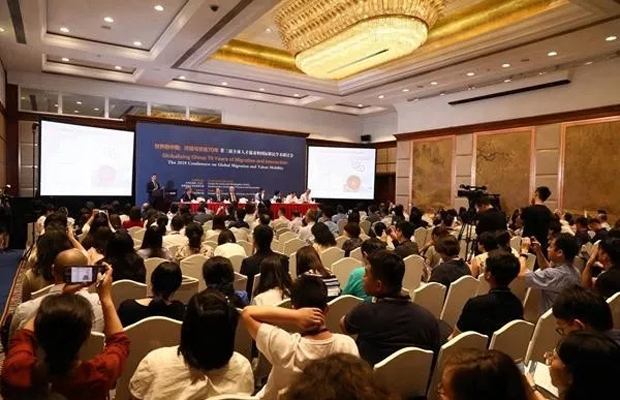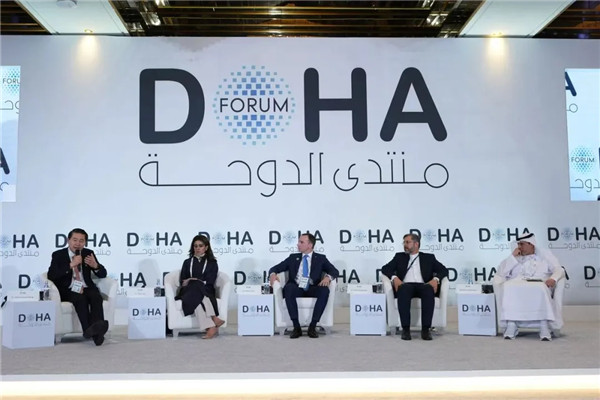Conference on global migration and talent mobility in Beijing
July 15 , 2019
The 2019 Conference on Global Migration and Talent Mobility was held in Beijing, on July 13, 2019. [Photo courtesy of CCG]
The 2019 Conference on Global Migration and Talent Mobility kicked off last Saturday on July 13, bringing together scholars and experts from world-leading universities and research institutions who work in the fields of migration studies, public affairs and international relations.
The conference, themed “Globalized China: 70 years of migration and interaction,” addressed a host of issues. These included global migration governance; overseas Chinese in the context of new globalization; immigration and the transformation of Chinese society; as well as talent recruitment and retention.
Regarding the issues of global talent management (GTM) and higher education governance, Liu Hong, chair of the School of Social Sciences at Nanyang Technological University, shared Singapore’s experience and its implications for China. Liu said that he believed “brain circulation” would reinforce the global “war for talent.”
Liu also recognized the role that higher education and R&D played in contributing to economic development and human capital capacity building. “As it is imperative to formulate policies at both the national and local levels to attract and nurture talent, we need to also incorporate political economy into the GTM framework,” Liu said.
Speaking on the global experience of managing high-skilled migration, Thomas Liebig, deputy head of the International Migration Division of the Organization for Economic Cooperation and Development (OECD), introduced OECD Indicators of Talent Attractiveness as it relates to three types of talented migrants, namely professionals with higher degrees, entrepreneurs and university students.
Nevertheless, he also noted that “attracting talent is not only about facilitating migration and providing good pay; many factors play a role, and the weight of these will depend on individual circumstances and preferences.”
Wu Jiang, the former director of the China Academy of Personnel Sciences, shared China’s experience in talent management at the conference.
“Among the 900 million working individuals in China, only 180 million can be categorized as ‘technical human capital,’ and they contribute to almost 35% of China’s GDP. In addition, there are only 50 R&D personnel for every 10,000 workers. Although these statistics indicate a substantial gap in the overall talent profile between China and developed countries, we have still made huge progress compared to 70 years ago,” Wu said.
In addition, Wu shed light on China’s efforts to address the demand and supply of talent from key national strategies such as “Made in China 2025,” innovation-driven development, and rural revitalization, to name a few.
Other experts from the UN, the International Organization for Migration (IMO), the National Immigration Administration, the State Administration of Foreign Experts Affairs also participated in the discussion.
The conference was organized by the Center for China and Globalization (CCG) and the Southwestern University of Finance and Economics. It aims to build a global academic community in talent management, immigration legislation and policy research.






